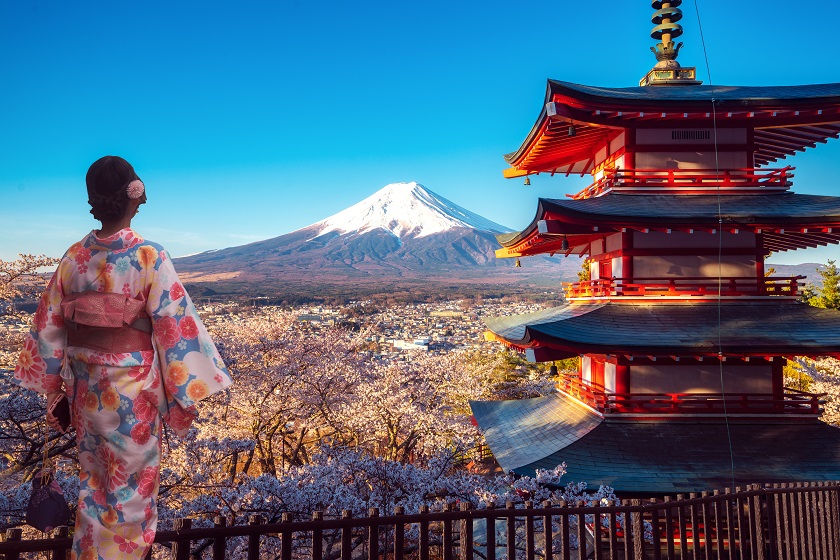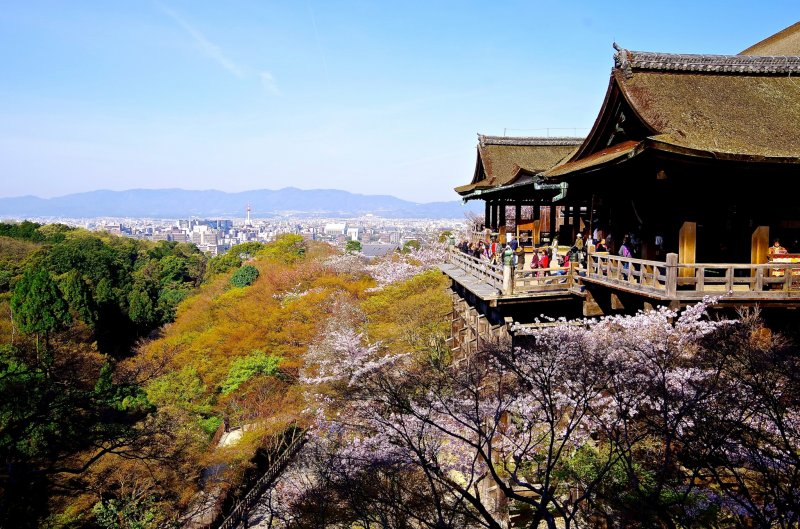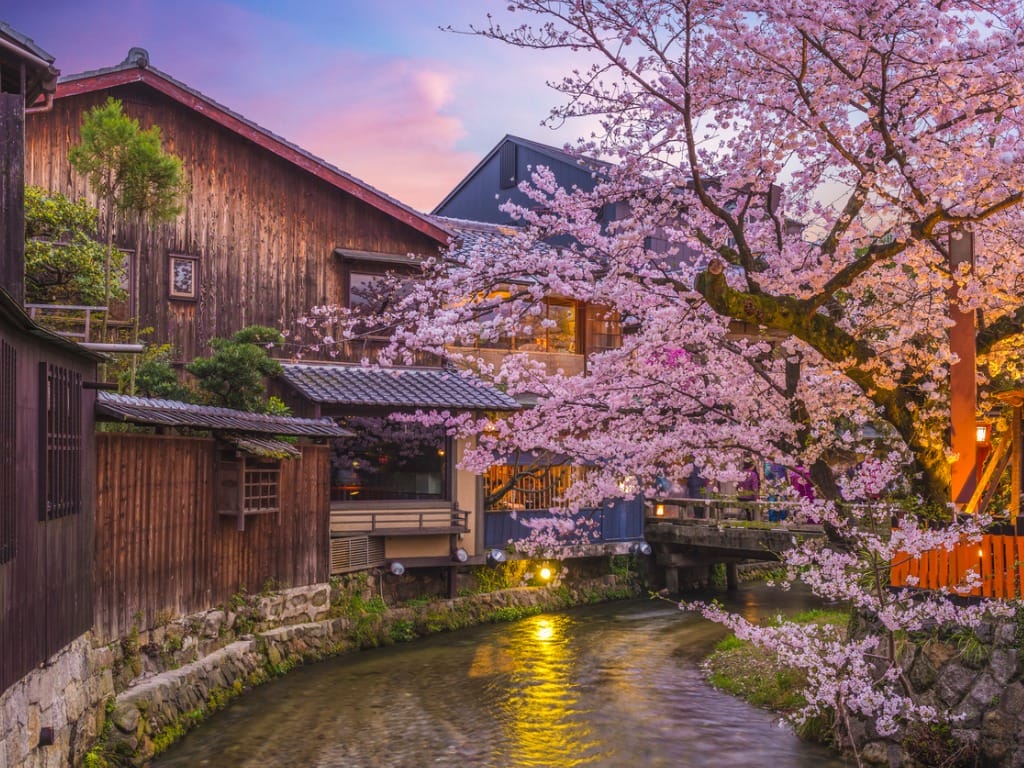Cherry blossoms are an iconic symbol of Japan, and there is no better place to experience their beauty than in Kyoto. Known as the cultural capital of Japan, Kyoto is home to numerous parks, temples, and gardens that come alive with the vibrant colors of cherry blossoms during the spring season. In this article, we will explore the significance of cherry blossoms in Japanese culture, the best time to visit Kyoto for cherry blossom viewing, the top locations for cherry blossom viewing in Kyoto, tips for photographing cherry blossoms, and the unique experience of the cherry blossom festival known as hanami.
Understanding the Significance of Cherry Blossoms in Japanese Culture
Cherry blossoms, or sakura, hold a special place in Japanese culture. They symbolize the fleeting nature of life and the beauty of mortality. The cherry blossom season is a time for reflection and appreciation of the transient beauty that comes and goes quickly, just like the ephemeral nature of cherry blossoms themselves.
In Japanese art and literature, cherry blossoms are often depicted to represent the beauty of both life and death. The delicate pink petals that cover the landscape during springtime evoke a sense of awe and wonder, reminding people to cherish each moment and find beauty in every stage of life.
When cherry blossoms bloom, they transform the entire landscape into a breathtaking spectacle. The vibrant pink hues create a mesmerizing sight that attracts locals and tourists alike. Parks and gardens become filled with people, gathering under the cherry blossom trees to enjoy hanami, the traditional custom of flower viewing.
During hanami, friends and families come together to have picnics and parties beneath the blooming cherry trees. They bring bento boxes filled with delicious food and sake to celebrate the arrival of spring and the beauty of the cherry blossoms. Laughter and joy fill the air as people appreciate the delicate petals fluttering in the wind.
Cherry blossom festivals are held all over Japan during the blooming season. These festivals, known as hanami matsuri, are a celebration of the arrival of spring and the beauty of nature. They feature various activities such as traditional music performances, tea ceremonies, and even fireworks displays.
Cherry blossoms have also influenced Japanese fashion and design. The elegant and graceful image of cherry blossoms is often incorporated into clothing, accessories, and home decor. The patterns and motifs inspired by cherry blossoms add a touch of beauty and tranquility to everyday life.
Furthermore, cherry blossoms have become a symbol of hope and renewal in Japanese culture. After the long and cold winter, the blooming of cherry blossoms signifies the arrival of warmer weather and the start of a new season. It brings a sense of optimism and rejuvenation to people’s hearts, reminding them that even after the darkest times, there is always a chance for new beginnings.
Overall, cherry blossoms hold a deep and profound meaning in Japanese culture. They represent the transience of life, the beauty of mortality, and the importance of cherishing every moment. The annual blooming of cherry blossoms is a cherished event that brings people together to appreciate the ephemeral beauty of nature and find solace in its fleeting existence.

The Best Time to Visit Kyoto for Cherry Blossoms
Planning a trip to Kyoto to witness the breathtaking cherry blossoms requires careful consideration of the blooming period. The exact timing of cherry blossom bloom varies from year to year, but typically occurs in late March to early April.
When visiting Kyoto for cherry blossoms, it is essential to plan your trip around the blooming period. This magical time of year brings a burst of color and beauty to the city’s landscapes, creating a truly enchanting experience for visitors.
Predicting the Cherry Blossom Bloom
Various prediction methods are used to estimate when the cherry blossoms will be in full bloom. One popular method is to track the blooming progress through the blooming forecast map provided by the Japan Meteorological Corporation. This map is updated as the bloom approaches, allowing visitors to plan their trip accordingly.
As the cherry blossoms begin to bloom, the city of Kyoto becomes a hub of excitement and anticipation. Locals and tourists alike eagerly await the arrival of this natural spectacle, and the blooming forecast map serves as a valuable tool to ensure that no one misses out on the beauty.
Furthermore, the blooming period can be affected by weather conditions such as temperature and rainfall. Keep an eye on weather forecasts and consult local experts for the most accurate information. Understanding the factors that influence the bloom will help you make informed decisions when planning your visit.
Weather Conditions and Cherry Blossom Viewing
While the blooming period is crucial, weather conditions can greatly impact the cherry blossom viewing experience. Ideally, visitors should aim for sunny and dry weather, as rain or wind can cause the delicate petals to fall prematurely.
Imagine strolling through the picturesque streets of Kyoto, basking in the warm sunlight as cherry blossoms gently sway in the breeze. The vibrant hues of pink and white against a clear blue sky create a scene straight out of a fairytale.
Additionally, the temperature plays a crucial role in the cherry blossom bloom. If the weather is too warm, the cherry blossoms may bloom earlier and have a shorter blooming period. Conversely, if the weather is too cold, the bloom may be delayed.
As you plan your visit to Kyoto, consider the ideal weather conditions that will enhance your cherry blossom viewing experience. The perfect combination of sunny skies, mild temperatures, and a gentle breeze will ensure that you witness the cherry blossoms at their most magnificent.
Top Locations for Cherry Blossom Viewing in Kyoto
Kyoto, the cultural capital of Japan, offers a plethora of locations to admire the beauty of cherry blossoms. From temples and shrines to parks and gardens, this ancient city is a paradise for nature lovers and photography enthusiasts alike.
Temples and Shrines with Cherry Blossom Trees
One of the most enchanting ways to experience cherry blossoms in Kyoto is by visiting the city’s temples and shrines. The combination of ancient architecture and delicate pink flowers creates a magical ambiance that transports visitors to a different time. Kiyomizu-dera Temple, a UNESCO World Heritage site, is an excellent choice for cherry blossom viewing. Its wooden stage, perched on the hillside, offers panoramic views of cherry blossom-filled hills, creating a breathtaking sight that is sure to leave a lasting impression.
Another popular destination for cherry blossom enthusiasts is the Fushimi Inari Taisha Shrine. Known for its thoUnited Statesnds of vibrant red torii gates, this iconic shrine is surrounded by cherry blossom trees that bloom in harmony with the changing seasons. Walking through the torii gates, visitors are greeted by the delicate fragrance of cherry blossoms, creating a sensory experience that is truly unforgettable.

Parks and Gardens for Hanami (Flower Viewing)
For a more relaxed cherry blossom experience, Kyoto’s parks and gardens are perfect locations for hanami, the traditional Japanese custom of flower viewing. Maruyama Park, located in the heart of the city, is one of the most famous hanami spots in Kyoto. Its expansive grounds are adorned with numerous cherry blossom trees, creating a sea of pink petals that is a sight to behold when in full bloom. At the center of the park stands a giant weeping cherry tree known as “Gion Shidare,” which becomes the focal point of attention and admiration during the cherry blossom season.
Another charming option for hanami is the Arashiyama Bamboo Grove. As visitors stroll through the towering bamboo stalks, they are greeted by the gentle rustling of leaves and the occasional glimpse of cherry blossoms peeking through the greenery. This unique combination of bamboo and cherry blossoms creates a tranquil and picturesque setting that is perfect for capturing stunning photographs and immersing oneself in the beauty of nature.
In addition to these popular spots, Kyoto is also home to numerous other temples, shrines, parks, and gardens that offer equally enchanting cherry blossom viewing experiences. Whether it’s the serene beauty of the Philosopher’s Path, the historic charm of Nijo Castle, or the peaceful atmosphere of the Imperial Palace Park, each location has its own unique allure that adds to the overall charm of Kyoto during the cherry blossom season.
So, if you’re planning a trip to Kyoto, make sure to include these top locations for cherry blossom viewing in your itinerary. Immerse yourself in the beauty of nature, witness the ephemeral beauty of cherry blossoms, and create memories that will last a lifetime.
Tips for Photographing Cherry Blossoms in Kyoto
Capturing the essence of cherry blossoms through photography can be a rewarding experience. Here are some tips to help you capture stunning images:
Cherry blossoms, also known as sakura, are a symbol of beauty and renewal in Japanese culture. Every spring, these delicate pink flowers bloom across the city of Kyoto, creating a breathtaking spectacle. Photographing cherry blossoms in Kyoto is a popular activity among locals and tourists alike, as it allows you to capture the ephemeral beauty of nature.
When photographing cherry blossoms, it’s best to use a wide aperture to achieve a shallow depth of field, allowing the flowers to stand out and the background to blur gently. This technique helps to create a dreamy and ethereal atmosphere in your photos, emphasizing the delicate nature of the blossoms. A lower ISO setting is advisable to maintain image quality, especially in daylight when there is ample natural light available. By keeping the ISO low, you can minimize noise and capture crisp, detailed images.
Additionally, consider using a tripod to stabilize your camera, especially during low light conditions or longer exposure shots. The soft, pastel hues of cherry blossoms are often best captured during the golden hour, just after sunrise or before sunset, when the light is warm and diffused. Using a tripod allows you to keep your camera steady and avoid any unwanted camera shake, resulting in sharper images.
Ideal Camera Settings for Cherry Blossom Photography
Cherry blossoms are a symbol of purity and transience in Japanese culture. To truly capture their essence, it’s important to pay attention to the finer details. When photographing these delicate flowers, try to get up close and personal. Use a macro lens or the macro mode on your camera to capture the intricate details of each petal and the delicate texture of the blossoms. This will add a sense of intimacy and depth to your photos, allowing viewers to truly appreciate the beauty of cherry blossoms.
Composition also plays a crucial role in capturing stunning cherry blossom photos. Experiment with different angles, framing, and perspectives to highlight the beauty of cherry blossoms. Incorporate elements such as traditional Japanese architecture or iconic landmarks to add depth and context to your photos. By juxtaposing the ephemeral beauty of the cherry blossoms with the timeless structures of Kyoto, you can create visually compelling images that tell a story.
Composition Tips for Capturing Cherry Blossoms
Cherry blossoms are not only a feast for the eyes but also a symbol of the fleeting nature of life. Each year, these delicate flowers bloom for only a short period, reminding us to cherish the present moment. When photographing cherry blossoms, try to capture this sense of transience and evanescence. Look for fallen petals or branches, which can add a sense of impermanence and fragility to your photos.
Another composition tip is to incorporate leading lines into your photos. Look for pathways or rivers lined with cherry trees, and use them to guide the viewer’s eye towards the focal point of your image. This technique adds a sense of depth and draws the viewer into the scene, creating a more immersive experience.
Lastly, don’t be afraid to experiment with different perspectives. Get down low to capture the cherry blossoms from a worm’s-eye view, or climb up a hill to photograph them from a bird’s-eye view. Changing your perspective can completely transform the way cherry blossoms are portrayed in your photos, allowing you to create unique and captivating images.
Experiencing Hanami: The Cherry Blossom Festival in Kyoto
One of the most cherished traditions in Japan is the hanami festival, where friends and families gather to have picnics under the cherry blossom trees. This festive atmosphere can be experienced in Kyoto as well.

Traditional Hanami Picnics
During hanami, locals and tourists alike spread out picnic blankets beneath the blooming cherry trees and indulge in delicious food and drinks. Popular spots for hanami picnics in Kyoto include Higashiyama Park and Philosopher’s Path. Don’t forget to try traditional hanami snacks like onigiri (rice balls) and sakura mochi (sweet rice cakes wrapped in cherry leaves).
Nighttime Cherry Blossom Viewing: Yozakura
As evening falls, another enchanting aspect of hanami in Kyoto comes alive: yozakura, or nighttime cherry blossom viewing. Some temples and gardens, such as the Kodai-ji Temple and Maruyama Park, illuminate the cherry blossom trees, creating a magical atmosphere. Take a leisurely stroll under the softly lit cherry blossoms for a truly unforgettable experience.
Discovering the beauty of cherry blossoms in Kyoto is a truly magical experience. Immerse yourself in the rich cultural significance of cherry blossoms, explore the top locations for cherry blossom viewing, capture stunning photographs, and partake in the festive atmosphere of the hanami festival. With careful planning, you can make the most of this fleeting and enchanting season in Kyoto.



